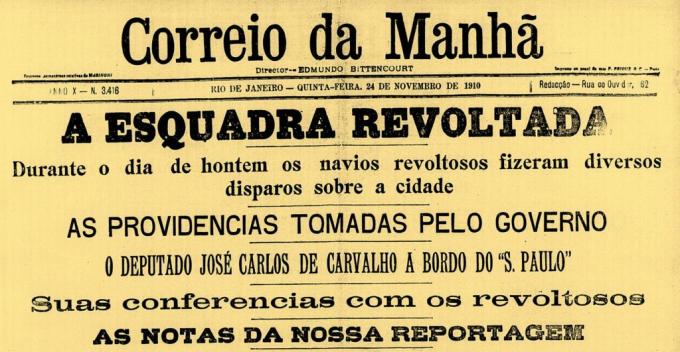
A Revolt of the Chibata took place in the city of Rio de Janeiro, the capital of Brazil at the time, between November 22nd and 27th, 1910.
It was organized by the class of sailors dissatisfied with the corporation's internal regiment, which involved physical punishment, poor working conditions, in addition to low wages.
see more
Scientists use technology to unlock secrets in ancient Egyptian art…
Archaeologists discover stunning Bronze Age tombs in…
Your leader most emblematic was João Cândido, known as the “black admiral”.
During the time when the Chibata Revolt took place, the Brazilian navy was composed mostly of recently freed enslaved blacks who sought to survive during the post-abolition period.
The working conditions offered were precarious and unhealthy, in addition to low pay.
Any demonstration of dissatisfaction or discontent on the part of the sailors was suppressed by the practice of punishment by whipping. Hence the movement name.
You main reasons that sparked the revolt were:
It is believed that the trigger for the beginning of the whip revolt happened with the punishment suffered by the sailor Marcelino Rodrigues, punished with 250 lashes for attacking an officer.
The Chibata Revolt began at dawn on November 22, 1910 inside the battleship “Minas Gerais”. The riot was led by Joao Candido Felisberto, the “Black Admiral”.

The episode ended with the death of the ship's commander and two more officers who resisted the movement's onslaught by refusing to abandon the warship.
Later, sailors from the battleship “São Paulo” also joined the rebellion, in addition to members of the large ships “Deodoro” and “Bahia”.
Meanwhile, to legitimize the movement, ships began to bomb the city of Rio de Janeiro.
At the time, the country swore in its newest president, Marshal Hermes da Fonseca.
In contact with the government, the rebels created a manifesto containing their main claims, demanding the improvement in the quality of work and food, amnesty for those involved in the revolt, as well as an end to physical punishment extremes.
On the 26th of November, President Hermes da Fonseca decided to accept the claims of the sailors, in what seemed to be the end of the movement.
Given the situation of the revolt, the government appears to accept the proposals of the rebels and put an end to the riot.
However, shortly after the sailors had surrendered their weapons and left the boats, the president ordered the removal and expulsion of some demonstrators from the corporation.
The mutineers' demands were not met.
The feeling of dissatisfaction returned, starting a new revolt, this time with the Ilha das Cobras as a backdrop.
Vigorously repressed by the government, the second mutiny organized by the sailors had consequences even more serious than the previous one.
Several rebels died in the underground cells of the island's fortress, and others were forcibly sent to the Amazon to work in the rubber extraction.
João Cândido he survived, however, after being denied amnesty, he was expelled from the navy and interned at the Hospital de Alienados in Rio de Janeiro. On December 1, 1912, the “black admiral” is acquitted of the charges and is found not guilty.

On December 6, 1969, João Cândido died of cancer at the age of 89, forgotten and penniless, at the Getúlio Vargas hospital.
See too:The Vaccine Revolt


